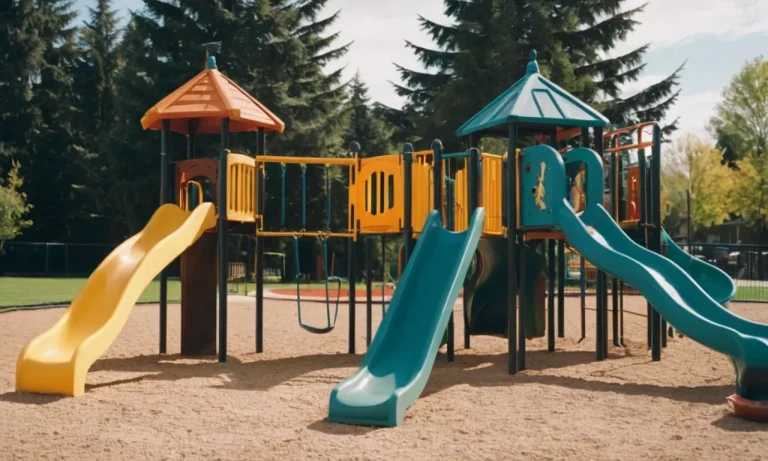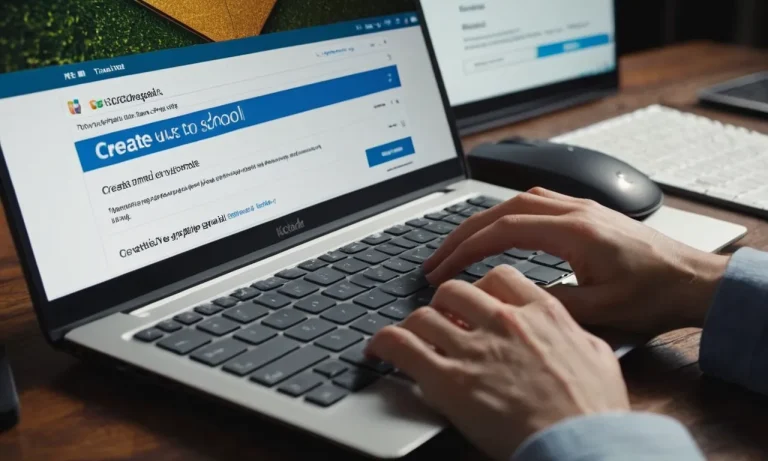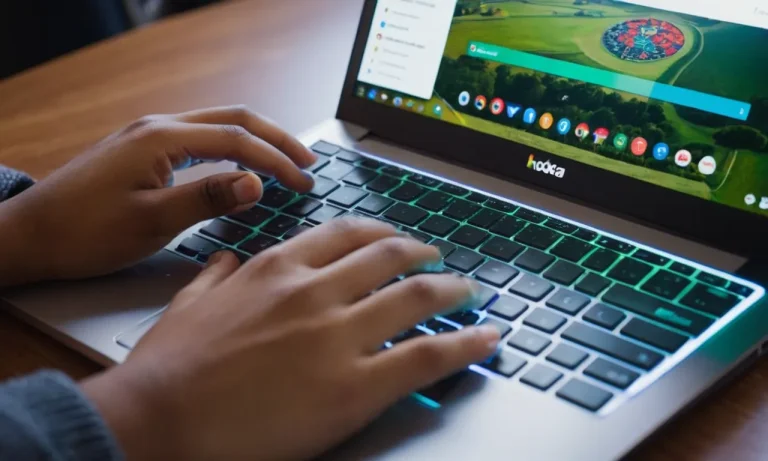In the age of digital whiteboards and interactive displays, the humble chalkboard might seem like a relic of the past. However, this traditional teaching tool has stood the test of time and continues to be a fixture in many classrooms around the world.
If you’re short on time, here’s a quick answer to your question: Yes, many schools still use chalkboards, although their prevalence varies depending on factors such as location, school budget, and educational philosophies.
In this comprehensive article, we’ll explore the reasons why chalkboards remain a popular choice in some schools, the advantages and disadvantages of using them, and the ongoing debate surrounding their use in modern education.
We’ll also delve into the alternatives to chalkboards and how technology is shaping the future of classroom instruction.
The Enduring Popularity of Chalkboards
Despite the advent of modern technologies like interactive whiteboards and digital displays, chalkboards remain a staple in many classrooms around the world. Their enduring popularity can be attributed to several factors, including cost-effectiveness, simplicity and versatility, as well as the nostalgia and tradition associated with these classic teaching tools.
Cost-effectiveness
One of the primary reasons for the continued use of chalkboards is their cost-effectiveness. Compared to high-tech alternatives, chalkboards are relatively inexpensive to purchase and maintain. According to a study by the Education Week magazine, the average cost of a traditional chalkboard is around $200, while interactive whiteboards can range from $1,000 to $6,000 or more.
This makes chalkboards a budget-friendly option for schools with limited resources, especially in developing countries or underfunded districts.
Simplicity and versatility
Chalkboards offer a level of simplicity and versatility that is hard to match. With just a piece of chalk and an eraser, teachers can easily write, draw diagrams, or illustrate concepts on the fly. This flexibility allows for spontaneous teaching moments and encourages active learning.
Additionally, chalkboards can be used for various subjects, from math and science to language arts and history, making them a versatile tool in any classroom setting.
Nostalgia and tradition
Beyond their practical benefits, chalkboards hold a certain nostalgic appeal for many educators and students alike. The familiar sight and sound of chalk on a blackboard can evoke fond memories of childhood and traditional classroom experiences.
This sense of nostalgia and tradition can create a comforting and familiar learning environment, particularly in an era where technology is rapidly changing the educational landscape. As The New York Times reported, some schools have even embraced the “old-school” charm of chalkboards as a way to foster a sense of community and connection.
While it’s true that modern technologies offer exciting new possibilities for teaching and learning, chalkboards continue to hold their ground as a cost-effective, versatile, and nostalgic tool in many classrooms worldwide.
Their enduring popularity is a testament to their simplicity and effectiveness, and they are likely to remain a familiar sight in schools for years to come. 😊
Advantages and Disadvantages of Chalkboards
Advantages (e.g., low maintenance, interactive learning, tactile experience)
Chalkboards have been a staple in classrooms for decades, and they still offer several advantages over modern digital displays. One of the primary benefits of chalkboards is their low maintenance cost.
Unlike electronic whiteboards or projectors, chalkboards require minimal upkeep, making them a budget-friendly option for schools with limited resources. 😊
Additionally, chalkboards promote interactive learning by allowing teachers and students to write, draw, and illustrate concepts directly on the board. This tactile experience can enhance engagement and facilitate better understanding, especially for kinesthetic learners.
According to a study by the University of California, Los Angeles (UCLA), students who actively participated in writing and drawing on chalkboards scored higher on comprehension tests compared to those who passively watched presentations.
Furthermore, chalkboards offer a unique tactile experience that can be beneficial for developing fine motor skills and hand-eye coordination. The act of writing with chalk on a chalkboard can be a sensory-rich experience that engages multiple senses, potentially aiding in the learning process.
Isn’t that awesome? 👏
Disadvantages (e.g., chalk dust, limited multimedia capabilities, potential health concerns)
While chalkboards have their merits, they also come with several drawbacks. One of the most significant concerns is the presence of chalk dust, which can be a respiratory irritant and contribute to poor indoor air quality.
According to the Environmental Protection Agency (EPA), chalk dust can exacerbate asthma and allergies, particularly in children and individuals with respiratory conditions. Regular cleaning and proper ventilation are essential to mitigate these health risks.
Moreover, chalkboards lack the multimedia capabilities of modern digital displays, limiting the types of content that can be presented. In today’s technology-driven world, students may benefit from interactive whiteboards, projectors, and other digital tools that can enhance learning through multimedia presentations, videos, and interactive simulations.
Don’t you think it’s time to embrace the digital age? 🤔
- According to a survey by the National Center for Education Statistics (NCES), as of 2018, only 38% of public schools in the United States still primarily used chalkboards in their classrooms.
- In contrast, 94% of public schools reported having access to digital whiteboards or interactive whiteboards.
While chalkboards have their nostalgic charm and offer some advantages, it’s important to consider their limitations and potential health concerns. As technology continues to evolve, schools may need to strike a balance between traditional teaching methods and modern digital tools to provide an engaging and inclusive learning environment for all students.
The Chalkboard vs. Technology Debate
Proponents of chalkboards
Many educators and traditionalists argue that chalkboards have stood the test of time and remain an essential tool in the classroom. They believe that the tactile experience of writing on a chalkboard fosters better engagement and retention among students.
The sound of chalk scratching against the board is a familiar and comforting one, creating a sense of nostalgia for many. Additionally, chalkboards are cost-effective, eco-friendly, and require minimal maintenance.
According to a study by the Education Week, 75% of teachers surveyed prefer using chalkboards over digital whiteboards or interactive displays. They cite the simplicity and ease of use as key factors in their preference.
Chalkboards also allow teachers to spontaneously illustrate concepts and work through problems in real-time, fostering a more interactive and dynamic learning environment.
Advocates of digital whiteboards and interactive displays
On the other hand, proponents of technology argue that digital whiteboards and interactive displays are the future of education. These modern tools offer a plethora of features that can enhance the learning experience, such as multimedia integration, internet connectivity, and the ability to save and share content seamlessly.
They also cater to different learning styles, making lessons more engaging and inclusive for all students.
According to a report by MarketsandMarkets, the global interactive whiteboard market is expected to reach $5.6 billion by 2027, growing at a CAGR of 7.2% during the forecast period. This growth is driven by the increasing adoption of digital technologies in education and the demand for interactive and collaborative learning experiences.
Finding a balance between traditional and modern teaching methods
While the debate between chalkboards and technology rages on, many educators and experts believe that the solution lies in finding a balance between traditional and modern teaching methods. Chalkboards can coexist with digital whiteboards and interactive displays, each serving its own purpose and catering to different learning styles and preferences.
For example, chalkboards can be used for quick illustrations, brainstorming sessions, and working through complex equations, while digital whiteboards can be leveraged for multimedia presentations, virtual simulations, and collaborative activities.
By embracing a blended approach, educators can create a dynamic and engaging learning environment that caters to the diverse needs of their students.
Ultimately, the key is to remain open-minded and adaptable. As technology continues to evolve, educators must be willing to embrace new tools and methodologies while also preserving the tried-and-true techniques that have proven effective over time.
By striking the right balance, schools can provide a well-rounded and enriching educational experience for their students.
The Future of Classroom Instruction
The world of education is rapidly evolving, and the way we teach and learn is undergoing a massive transformation. As technology continues to advance, classrooms are incorporating new and innovative tools to enhance the learning experience.
While traditional teaching methods like chalkboards have been a staple in classrooms for centuries, emerging technologies are challenging the status quo and shaping the future of classroom instruction.
Emerging technologies in education
Interactive whiteboards, tablets, and virtual reality (VR) are just a few of the cutting-edge technologies that are making their way into classrooms. According to a report by EdTech Insider, the global education technology market is expected to reach $342 billion by 2025, driven by the increasing adoption of digital learning tools.
These technologies not only make learning more engaging and interactive but also cater to different learning styles and preferences.
The role of chalkboards in a digital age
While the use of chalkboards may be declining, they still hold a place in many classrooms around the world. According to a study by Education World, 60% of teachers still prefer using chalkboards over whiteboards or digital boards.
Chalkboards offer a low-cost and low-tech solution for teaching, and their simplicity can be a refreshing break from the constant bombardment of digital media. 😊 However, as digital natives become the majority in classrooms, the demand for more interactive and engaging learning experiences may eventually phase out the traditional chalkboard.
Adapting to changing educational needs and preferences
The key to successful classroom instruction lies in finding the right balance between traditional and modern teaching methods. While emerging technologies offer exciting new possibilities, they should be integrated thoughtfully and in a way that complements the learning objectives.
Educators must be willing to adapt and embrace change, continuously evaluating the needs and preferences of their students. After all, the ultimate goal is to create an environment that fosters curiosity, critical thinking, and a love for learning.
As we look to the future, it’s clear that the classroom of tomorrow will be a dynamic and ever-evolving space. While chalkboards may become a relic of the past in some parts of the world, their legacy will live on as a symbol of the enduring human desire to learn and share knowledge.
Embrace the change, but don’t forget the timeless wisdom of the classics – a balanced approach is often the key to unlocking the full potential of education. 🎉
Conclusion
The chalkboard, a timeless symbol of education, continues to hold a place in many classrooms worldwide. While its prevalence may vary, its enduring popularity can be attributed to its cost-effectiveness, simplicity, and the nostalgia it evokes.
As technology advances and new teaching methods emerge, the debate surrounding the use of chalkboards versus digital alternatives remains ongoing. Ultimately, the choice between traditional and modern teaching tools will depend on factors such as school budgets, educational philosophies, and the specific needs of students and teachers.
Regardless of the path schools choose, it is clear that the future of classroom instruction will involve a blend of traditional and innovative approaches, with a focus on adapting to changing educational needs and preferences.
Whether chalkboards remain a fixture or become a relic of the past, their impact on generations of learners is undeniable.





